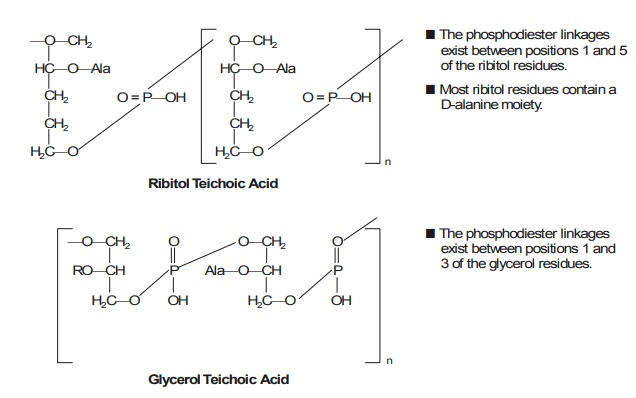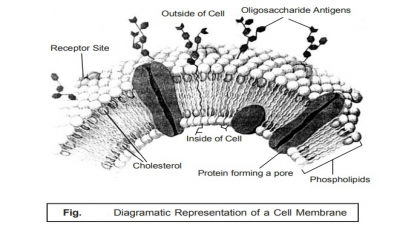Significance of Teichoic Acids
| Home | | Pharmaceutical Microbiology | | Pharmaceutical Microbiology |Chapter: Pharmaceutical Microbiology : Structure and Function of Bacterial Cells
The teichoic acid is a polymer invariably found in the wall of certain bacteria. It has been re-ported that the walls of two Gram-positive organisms belonging to the genus of micrococci being a member of the family Micrococcaceae, order Eubacteriales.
Significance of Teichoic Acids
The teichoic acid is a polymer invariably found in the wall of certain bacteria. It has been re-ported that the walls of two Gram-positive organisms belonging to the genus of micrococci being a member of the family Micrococcaceae, order Eubacteriales, namely : Staphylococcus aureus, and Staphylococcus faecalis usually comprise of teichoic acids — i.e., the acidic polymers of ribitol phos-phate and glycerol phosphate, that are covalently linked to peptidoglycan, and which can be conven-iently extracted with cold diluted acids, as given below :

In actual practice, however, the teichoic* acids may be duly grouped chiefly into two categories, namely : (a) wall teichoic acids, and (b) membrane teichoic acids.
Characteristic Features :
Most teichoic acids do possess certain inherent characteristic fea-tures as stated here under :
(1) They usually get bound to Mg2+ ions specifically, and there is quite a bit of evidence to suggest that they do aid in the protection of bacteria from the thermal injury by way of providing an adequate accessible pool of such cations for the stabilization of the cytoplasmic membrane exclusively.
(2) Importantly, the walls of a plethora of gram-positive organism contain almost any lipid, but those which distinctly belong to Mycobacterium, Corynebacterium, and certain other genera are conspicuously excepted.

